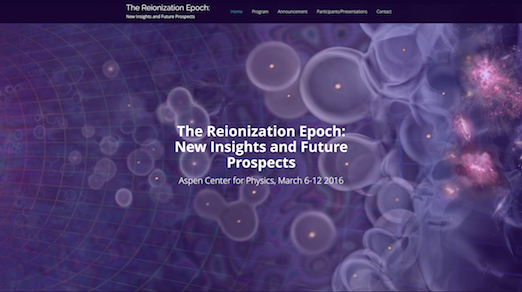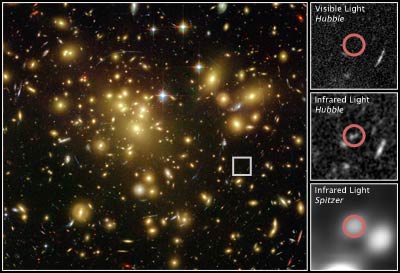Selected Meetings on High Redshift Galaxies

The Reionization Epoch: New Insights and Future Prospects
Aspen Center for Physics
6-12 March 2016
The past few years have seen enormous progress in our ability to observe and characterize the very early universe before the end of cosmic reionization after only one billion years. In particular, the installation of the WFC3/IR camera onboard the Hubble Space Telescope completely revolutionized the search for galaxies at redshifts z>6 leading to first galaxy candidates out to z~10-12, less than 500 Myr from the big bang. Thanks to large multi-wavelength datasets from the Hubble, Spitzer, and Chandra Space Telescopes as well as from 8-10 meter class ground-based telescopes, the early universe can now be studied in unprecedented detail. Additionally, ALMA is starting to probe completely new parameter space at radio wavelengths, promising revolutionary insights into molecular gas, dust, and dynamics at high redshift. z>6 galaxy and quasar searches are soon being pushed to new territory with upcoming deep NIR surveys covering several square degrees.
At the same time, the first direct probes of neutral hydrogen before cosmic reionization are underway based on the redshifted 21 cm radio signal. Radio telescopes such as LOFAR, the Murchison Widefield Array (MWA), and the Precision Array for Probing the Epoch of Reionization (PAPER) are leading efforts in this exciting new field with the first generation surveys nearing completion. These projects are laying the groundwork for detailed studies with the SKA. Only by studying both reionization and the galaxies responsible will the full story of early galaxy formation be revealed.
more
The First Two Billion Years of Galaxy Formation: The Reionization Epoch and Beyond
Aspen Center for Physics
11-15 February 2008
Over the past years, we have made great strides in our ability to understand and to characterize the distant universe in its first two billion years. These advances have been made possible by the significant array of 8-10 meter class telescopes, large wide-area optical and near-infrared imagers, the Hubble Space Telescope, radio telescopes with kilometer long baselines, and a large array of other telescopes in space including Chandra, XMM, and the Spitzer Space Telescope. Somewhat simultaneously, similar advances have been made in the computational arena, and now with the current generation of simulations we are able to simulate very large volumes of over 500h-1 Mpc on a side, with a mass resolution of ~1010 solar masses. All these advances have been extremely helpful for studies of early galaxy formation which require superb observational and computational tools, and now we are able to identify candidate galaxies out to redshifts as high as z~7-10 and study massive galaxies at z~2-3 in significant detail. The goal of this meeting was to bring together a large community of observers and theorists studying a wide range of different phenomena in high-redshift galaxies.
more